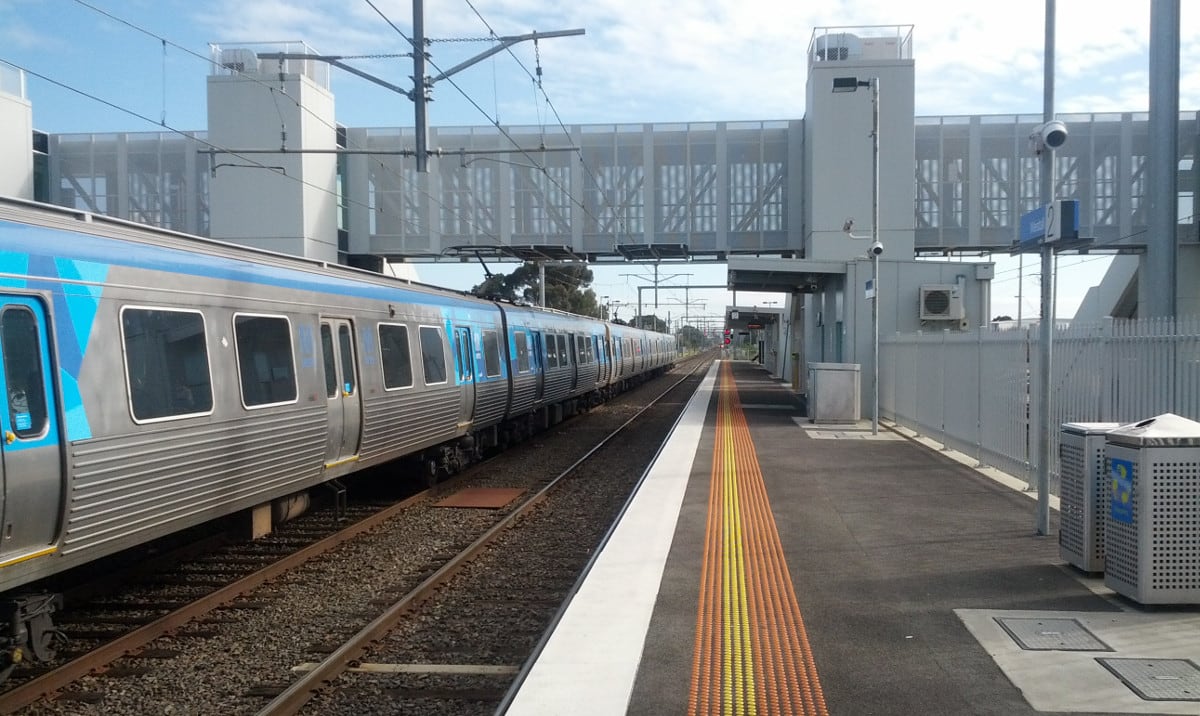V/Line, wheel flanges and where to for the vision of the Dandenong rail corridor
Comment
The finger-pointing which has surfaced in the reporting of V/Line's ongoing troubles with excessive wheel wear on its fleet of VLocity trains has sparked an interesting discussion in article comment and forum threads all around the Internet.
For instance this piece in The Age has this standout comment:
The feedback on the article continues to indicate poor decision making by Government directed appointees. It is doubtful whether lowering of service delivery outcomes is only a Corey Hannett decision. He will have been directed by the Ministers of the time.
The answer that the project was all about separating regional and metro railway line services beggars belief. Nothing about Levels of Service (LoS)?
The Age user oz4lca, Princes Hill, 2016-02-03 9:17AM
The components which were reportedly cost managed out of the Regional Rail Link five years ago - using and upgrading the existing North Melbourne flyover, the use of a flat-bed junction instead of a flyover junction at Deer Park and leaving in place multiple level crossings on the Sunshine-Deer Park section - appear to be affecting service levels.
Anecdotal reports of a choke point at the Deer Park junction of the Ballarat and Geelong lines and claims that the North Melbourne flyover is responsible for the excessive wheel wear on the VLocity fleet neatly all point back to hard infrastructure issues. The rail project may have come in under budget at $3.65 billion however the pride in that achievement is all but lost should the V/Line issues indeed eventually get attributed to aspects of cost-cutting on the Regional Rail Link project.
Clearly lessons will be learnt in some form or another and hopefully they can be learned in time to ensure the scope of the Melbourne Metro Rail project and the Dandenong corridor level crossing removal projects do not end up in the same boat.
The Age report from two days ago also mentions there is a push by transport experts to expand the Caulfield-Dandenong corridor from two tracks to four as part of the level crossing removal projects currently at tender.
However before there is a debate on the pros and cons of quadruplicating the Dandenong corridor, what types of services do we want to run in this corridor? The want question needs to be answered first before the need question: what is the vision for this railway line?
Is the push to quadruplicate track just about giving outer-suburban commuters to the city a faster journey or is it based on a broader vision for driving investment into centres along the line, perhaps taking the decentralisation and concentration of jobs in suburban centres like Dandenong to the next level?
We know the arc between Pakenham and Cranbourne is the only remaining area in the south east which has room within the urban growth boundary for more suburban development and that therefore will translate into a need for more capacity on the Dandenong corridor to carry more people into the city under supposed status quo scenario.
However do we want to simply plan for forecast demand, lure more people out of their cars onto the public transport network or both?
If we are only planning to cater for forecast demand then it is going to take a long time to fill up the capacity of the Dandenong corridor given it only has 16 services utilising the rail line during weekday peak at present and notwithstanding 1-2 Traralgon V/Line services during peak, when the Melbourne Metro Rail tunnel comes online, coupled with a new signalling system, 24-28 trains per hour could theoretically be possible.
If we are planing to cater for forecast demand and make great strides to entice people out of their cars to increase the mode share of Public Transport then yes, express services running frequently at the same time as frequent stopping-all-services on four tracks on the Dandenong corridor will probably be needed.
The previous Labor Government was happy to spruik its vision of achieving 20% of total motorised transport mode share on Public Transport by 2020 yet the current Labor Government has not alluded to anything like this.
Insofar as we have been made aware that Infrastructure Victoria is the way toward greater depoliticisation of infrastructure planning in the state, the transport components of the authority's 30 year strategy should be guided by a similar vision to that of the previous Larbor Government just with more oompf, like aiming for 30% or 40% public transport mode share over the next 30 years.
Aiming for a higher mode share means that forecast demand for public transport under the status quo and even more increased demand from luring people out of their cars must be planned and catered for and only then will a hard infrastructure debate about quadruplicating the Dandenong corridor be framed in the right context.
Lead image credit: Wikipedia.
